There are different types of moth that can infest your home. Some are destructive while others may not cause significant damage. To effectively get rid of these flying insects, it is important understand the different species of moths and how to identify them and differences compared to butterflies
Table of Contents
1. Tineola Bisselliella
Commonly referred to as the clothes moth, the Tineola bisselliella is one of the most known moth species. It thrives most in natural fibers, precisely wool, where it also lays its eggs and where the larvae develop. More so, these moths can also be found in food, especially grains stored away in cabinets.
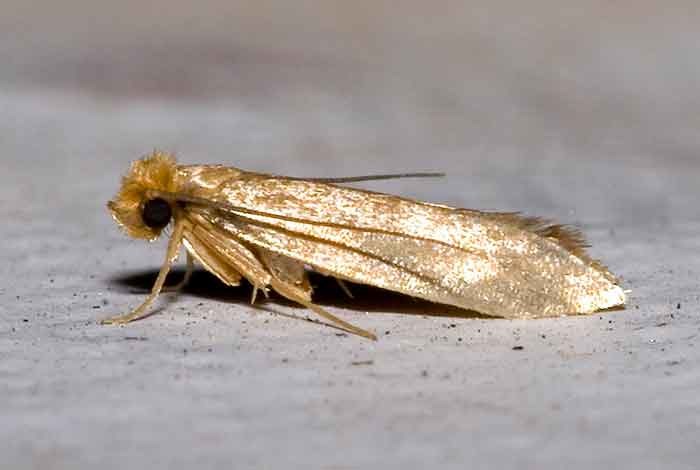
The moth is rather small compared to other species, meaning only seven millimeters in length and a wingspan of nine to 16 millimeters. They have a distinct yellow-brown/ mustard/ ocherous hue on their body and a red-orange hair tuft on their heads.
They go through the same 4-stage metamorphosis where the female will lay eggs in clusters of about 100+. After that, the eggs will adhere to the surface and hatch in about a week to its larvae form, which is also known as a Caterpillar. These microscopic whitish caterpillars are the devastating pests because of the damage they can cause to clothes or mats inside your home.
2. Indian Meal Moth
Another frustrating house moth is the Indian meal moth also referred to as the pantry moth. As the name suggests, it dwells and thrives in cabinet grains and food where its larvae too develop to the adult moth. They are known to attack just about any food in the house from grains, dried fruits like dates, pet foods, seeds, nuts and even fried milk.
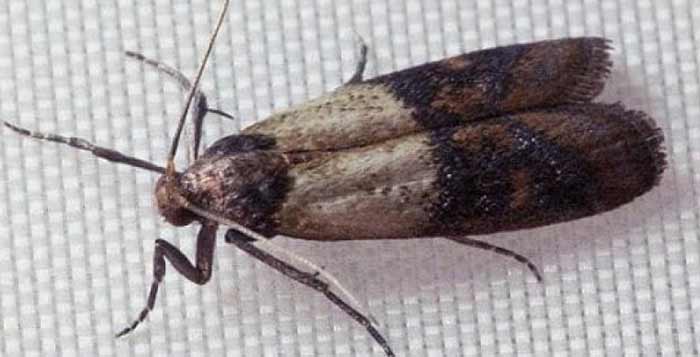
As they feed on the grain, they leave behind a silken thread which then poses a threat to the food as it webs the food particles together. This means the food is no longer consumable or rather toxic for consumption. To identify such a moth, they tend to fly in a zigzag manner, they are pale grey in color, with a copper luster on their forewing.
Pantry moths tend to reproduce rather quickly especially if they’re innate breeding space. Once the female lays eggs on the food, the eggs quickly hatch to larvae. As the larvae move around the food, they feed and in approximately 2 weeks, they’re fully adults ready to mate and reproduce again. The short 6 weeks span of growth and development not only allows them to quickly ingest your home but could cause unending danger and damage to you and your home.
3. Luna Moth
Next up is the Luna moth, a common silk moth which distinguishes itself by its size. The giant moth has a pale/ lime green hue on the wings and a white body. Its wingspan is between 4.5 inches to over seven inches long. What’s interesting about this moth is in the stages of the moth from egg to color.
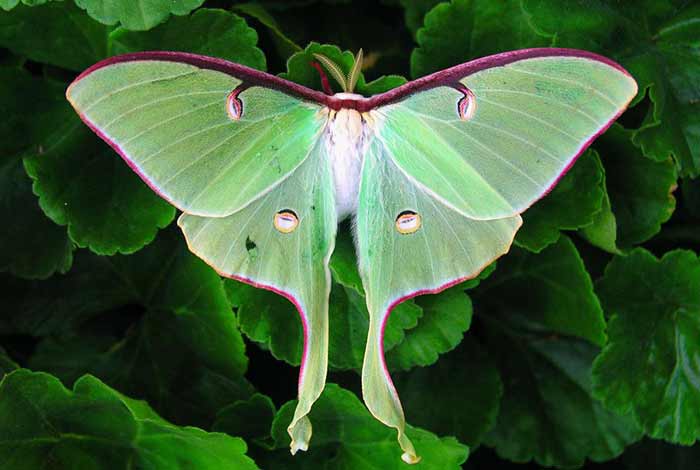
From the time the egg is laid, it’s small in size, about six millimeters long. It’s oval, white and brown in color, and it’s laid in groups which cling on the underside of leaves. After a few days, the eggs hatch to a larva that now turns green, slightly longer and has sparse hairs. When it about to cocoon, the moth changes color again to brownish, then finally the adult turns again to lime green.
The females and males of the line moth are quite similar, unlike other moth species. The same color, spots on the wings and even the length. One distinct feature about the female though, they have one of the largest abdomens that can carry over 400 eggs.
4. Atlas Moth (Attacus Atlas)
The Atlas moth is one of the largest moths with a wingspan of 9.4 inches and a surface area of 160cm2. Of all the moths, it has the largest with area.
The female is considerably larger and heavier than the male, which also has a broader antenna. The small body of the insect is not the only queer feature it has, also the fact that it has a colorful pattern under its reddish-brown wings.
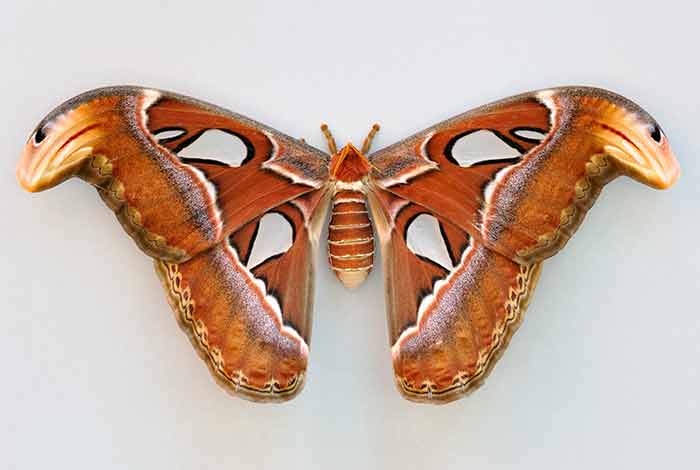
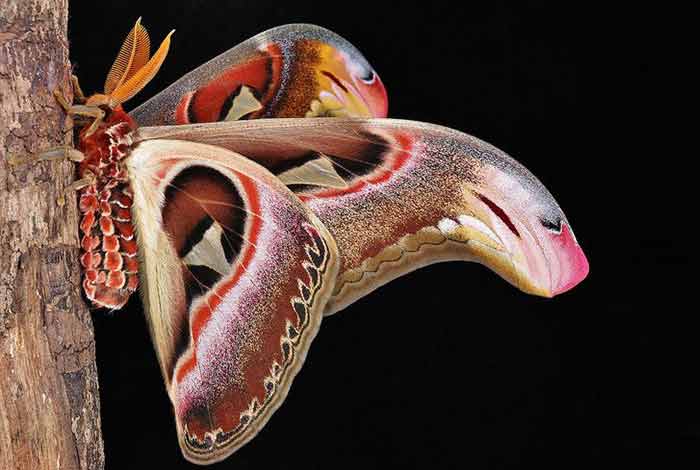
The lines are white, pink, purple, and black with triangular and scale-less windows. The atlas moth has a very short lifespan of just two weeks which can be further reduced by the moth’s activity such as flying. Hence, the moth has to preserve its valuable energy to elongate its lifespan.
6. White Witch (Thysania Agrippana)
The beautiful white witch moth has the largest wing span, which can measure up to 29 centimetres. White witch also goes by other names including the Birdwing Moth, Ghost Moth, Great Owlet Moth and Great Grey Witch Moth.
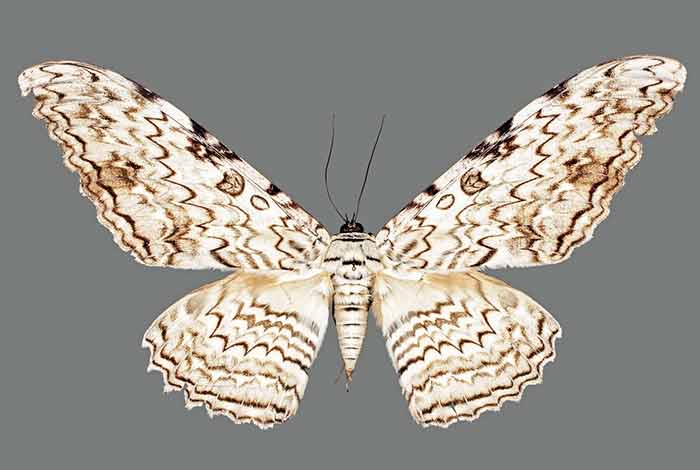
It has a unique zigzag pattern that acts as camo in the tropical trees which it very elusive and hard to spot.
7. Hercules Moth (Coscinocera Hercules)
Hercules is reportedly the biggest moth on planet earth. With a wing span of over 27cm, it is among the largest moths in the world .

Shockingly, regardless of the size, adult moths of this species do not feed. They lack usable mouths. As result, their the adults live for about two weeks to mate and lay eggs.
Interestingly, despite their short life span, the Hercules Moth can spend up to two years in the cocoon.
8. Peppered Moth
The peppered moth, biologically termed as the Biston betularia is a special species. Temperate in that it only flies at night. Another special feature is its larvae hue that tends to mimic the color of a twig. This protective mechanism where the moth senses the color of the twig to match it is used to protect it from its predators.
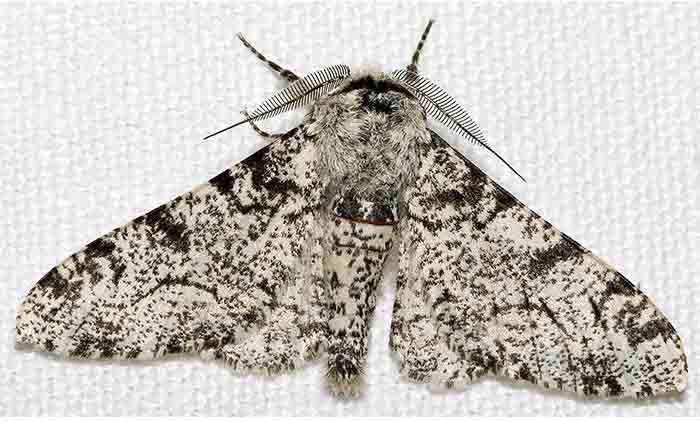
The body of this particular moth is stout with elongated forewings and a wingspan ranging from 45 to 62mm. They have white/ peppered wings and dark, cross-lined body. Others, however, have a distinct black liked body with rare ones having mild to no lines at all.
9. Domestic Silkmoth
It’s commonly known as just a silkmoth but the Bombyx mori from the Bombycidae family has a silkworm for a larva. The caterpillar then develops to a silkmoth during its pupa and adult stage. It’s one of the largest producers of silk hence a very essential and economic insect.

Unlike the wild silkmoth, the domestic ones have a particular liking to humans, which is more of a dependence on growth. In return, they produce the best silk than the former. They feed on mulberry leaves and have rather unique features compared to other silk moths.
First, they no longer fly. This is highly contributed to their heavy bodies and small wings that can no longer support their need to fly in search of a mating partner. The females precisely are three times bulkier than the male thanks to the eggs. Secondly, their distinct hue is no longer visible. You may see hue on their wings and body but it’s no longer distinct.
10. Gypsy Moth
There are different types of gypsy moths, native to their original habitats. The European gypsy is native to the western area which features temperate forests. The Asian gypsy is more common in areas like southern Europe, Asia, the Pacific, and northern Africa. These are the hybrid types that spread the moth species globally.
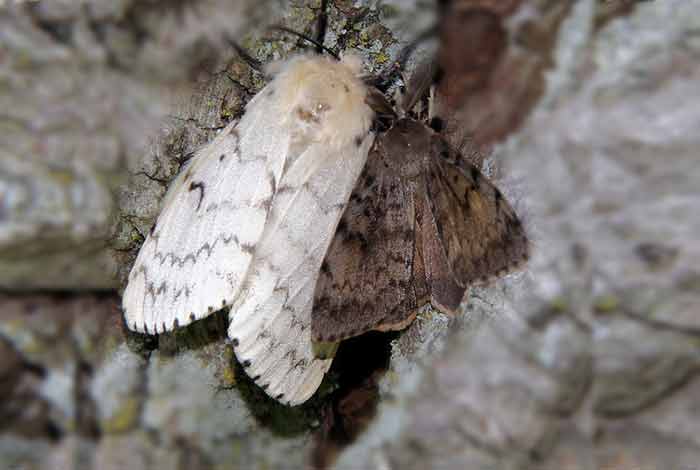
The gypsy is very colorful with white hind wings, brown forewings, red abdomen and very rarely, yellow abdomen. They have a wingspan of 1.6 inches where the males have an elongated abdomen the four large reversible coremata. These moths have a polyphagous diet that makes them dangerous pests as well since they feed on lucerne crops, seeds, nuts, rice, and sorghum.
11. Antheraea Polyphemus
Another species of the giant silk moth is the Polyphemus moth. It’s tan-colored with a wingspan of six inches. It has large eyespots on it’s two hind wings, purple in color, that’s one of its unique features.

Much like the other species in its family, the Antheraea has a four-stage metamorphosis. The female lays flat brown eggs on leaves of certain host plants like Pyrus, Prunus, or Salix. After that, the eggs then hatch into small yellow caterpillars that molt five times to turn into a pupa. The pupa is bright green with silver spots.
With very high dependency in their host plant, they feed on the plant until their about three or four inches long. They then cocoon in wraps of the host plant to become adults.
12. Tiger Moth
Arctic Caja also known as the garden tiger moth or great tiger moth is a unique species found in the northern parts of the USA, Canada, and Europe. The moth has a preference for a cooler climate with temperate conditions and also a host plant with pyrrolizidine alkaloids.
This moth has beautiful and conspicuous patterns that are pleasant to see but it also serves as a warming tiny predator since it produces poisonous body fluids. They also use their colored coating to scare birds such as bats.
They have a wingspan of approximately 55 millimeters. They have a distinct coating for the front and back, forewings are brown with white patterns while the hind are orange with black dots. Patterns and aberrations vary by how the moth obtained it: either artificially or by chance.
13. Tinea Pellionella
Similar to the tinea bisselliella, this is the case bearing clothes moth. A fungus moth that’s also very tiny in size. It is found widespread throughout the world with appearances mostly in summer and autumn.
It’s grey in color with a tint of light brown. The hairs on its head are darker in hue, however. The wingspan varies from 9 to 16 millimeters. Both forewings and hindwings have tiny hairs and indistinct dark spots. They can features different coloring where the forewing is brown and hind is grey.
The larvae of the moth feed on clothes, carpet, woolen fabrics and upholstery. This, therefore, terms it a dangerous pest. They can also chew on the wallpaper, fruits, and birds nests or cobwebs.
14. Diamondback Moth
The diamondback moth, biologically known as the Plutella xylostella or sometimes called the cabbage moth is also a house moth. The moth has a grey-brown hue with a cream-colored band which forms a sort of diamond on it’s back. Despite being widespread in the world, it is said to originate from the Mediterranean region.
The moth has a wingspan of 15 millimeters and a body length of six millimeters. It also features narrow forewings, brownish anterior margins and fine dark speckles on the wings. The hindwings however had. A light grey appearance. They are narrow, sharp-pointed and have a wide fringed. Besides that, its antennae are rather pronounced than other moth species.
15. Cinnabar Moth
This is a brightly colored arctic moth native to western Europe and central Asia. It gets its name from the distinct red patches on its wings. The day-flying moth also had rare patterning besides the red markings such as yellow dots, completely red forewings, and other variations.
They have a wingspan of 1.7 inches and a length of 0.79 inches. It is unpalatable hence uses specific host plants that also act as food plants for the larvae. Feeding on such plants, the larvae absorb the alkaline bitter taste from the plants making them unpalatable as well. They use their bright colors as protective measures against predators.
Another interesting feature of the Arctiidae larvae is its eating habits. The cannibal larvae/ caterpillars can, in fact, turn cannibalistic. The ferocious eating will be attributed to a lack of adequate food. This in turns makes some larvae feed on other cinnabar larvae. From the pale yellow stages to a black stage of the larvae, they can voraciously feed on each other to about 1.2 inches long.
16. Spilosoma Virginica
Finally, the Spilosoma virginica is another variant of the tiger moth. They have a colorful look including the tuft of hair in their heads. They feed on various plants like grass and clover, as well as certain crops, even so, they only pose little threat to garden crops.
The moths have a liking to summer temperatures and tend to hibernate during the winter and cooler seasons. The adult moth has a sustainable weight and length. Its wings tent over it’s back rather than below. They are white in color but have dark abdomens.
Metamorphosis is similar to other moths with the female laying over 20 eggs in a single later on a leaf. Upon hatching, the larva feeds on the host plant until it matures.
The female will tend to be larger than the Male. During mating, the adult female will extrude an organ that then emits pheromone; a unique scent smelled by males. They also fly in a zigzag manner to attract a partner.
Moths vs Butterflies
Further Reading